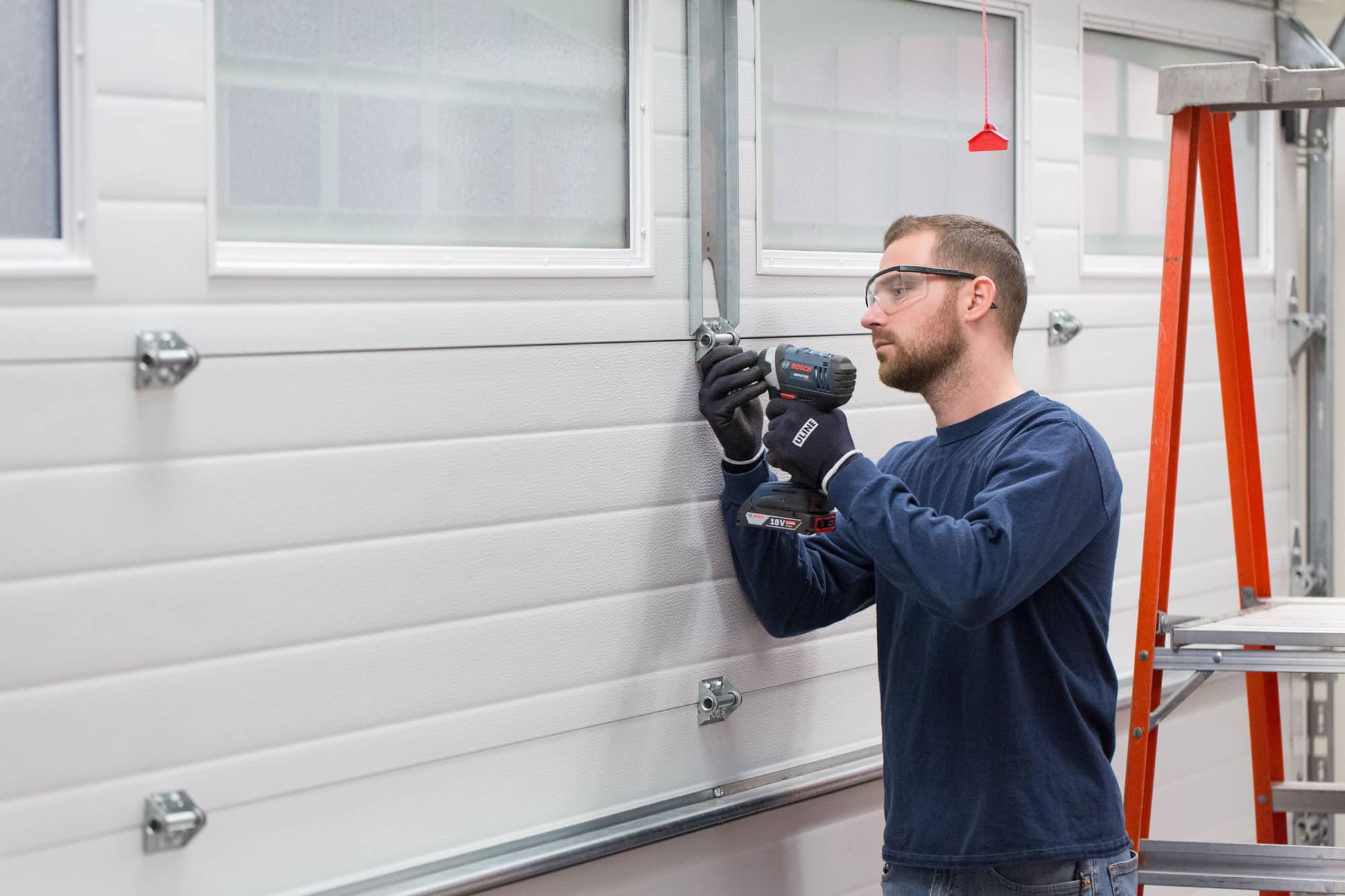Garage doors, like the sturdy sentinels of residential property, guard against external elements but may sometimes falter under continual wear and tear. This protective barrier’s malfunction can often disrupt daily routines, create security concerns and cause a significant amount of stress for homeowners.
Discerning these failures allows for timely intervention that not only remedies current issues but also prevents further deterioration and potential hazards. Hence, understanding common garage door problems and their solutions is vital to maintaining the functionality and longevity of this essential home feature.
The ensuing discourse aims to equip readers with practical knowledge about diagnosing home entrance issues and implementing simple fixes for frequent malfunctions. It delves into various aspects of garage door mechanics—meticulously explaining each repair process in clear, comprehensible language while offering pragmatic solutions to restore efficiency promptly.
Drawing from a wellspring of expert insights, this article seeks to foster a sense of belonging among its audience by providing them with information that empowers self-reliance while instilling confidence in their ability to tackle common garage door problems effectively.
Key Takeaways
– Understanding common garage door problems and their solutions is essential for maintenance.
– Misalignment, broken springs, and electrical malfunctions are common problems with garage doors.
– Accurate diagnosis is crucial before implementing suitable repair procedures.
– Regular maintenance and simple fixes can save time and money for homeowners.
Diagnosing Home Entrance Issues
Identifying problems with home entrances necessitates thorough examination of various elements, such as the functionality of garage doors, which can involve issues like misalignment, broken springs, or electrical malfunctions.
Misalignment typically manifests in uneven door movement or gaps along the garage door’s edges when closed. This issue is often a result of worn-out tracks or rollers that have shifted from their original position over time due to frequent use and requires realignment for optimal operation.
Broken springs represent another common problem; they are responsible for bearing the weight of the garage door during opening and closing operations. Consequently, if these springs are damaged or broken, it will be noticeably difficult to lift the door manually.
Understanding that garage doors operate on a system reliant on precise mechanics is crucial for effective troubleshooting processes. For example, a malfunctioning automatic opener can signify an electrical problem rather than a mechanical one. In such cases, checking whether the opener’s power source is functioning correctly would be beneficial before diving into more complex solutions. If there are still issues after confirming that power is reaching your unit effectively, it may indicate a need to reset your remote control settings or replace faulty wiring connections within your motor unit.
Once all possible problems have been identified and diagnosed accurately using this systematic approach, suitable repair procedures should then be implemented accordingly. For instance, realigning tracks involves loosening bolts holding them in place gently adjusting until they’re back in their correct position while replacing broken springs calls for careful removal and installation of new ones by following safety measures due to their high tension nature. Electrical repairs might require professional assistance based on complexity but simple tasks like resetting remote settings can easily be done following manufacturer instructions provided in user manuals thus restoring full functionality to home entrances without undue exertion or expense incurred by homeowners.
Simple Fixes for Frequent Malfunctions
Frequent malfunctions in automated entry systems can often be resolved through simple fixes, saving both time and money for homeowners.
A common issue is the failure of the garage door to close completely. This could be due to misaligned safety sensors that are mounted at the bottom corners of the door track and require a straight line between them to function correctly. If they become knocked or moved, it disrupts this line causing the door not to shut properly. To rectify this, ensure these sensors are aligned directly across from each other.
Another frequent malfunction involves a noisy garage door operation which can indicate a lack of lubrication on moving parts such as rollers, tracks or hinges. Regular maintenance should include applying a high-quality silicone spray lubricant to these components, keeping them running smoothly and reducing unpleasant sounds during operation. Additionally, loose hardware could also contribute to excessive noise; therefore it is essential to regularly check and tighten nuts and bolts on the door and track system.
A further common problem relates to an unresponsive remote control device – an issue that may simply be due to dead batteries in need of replacement. In some instances where battery substitution does not resolve the issue, reprogramming might be necessary according to specific manufacturer’s instructions typically available online or within product manuals. Moreover, if there is physical damage observed on remotes or wall switches wiring replacements can solve such problems efficiently ensuring seamless entrance operations once again.
https://perfectsolutionsgaragedoor.com/garage-door-repair-troubleshooting-tips-for-smooth-operation/


